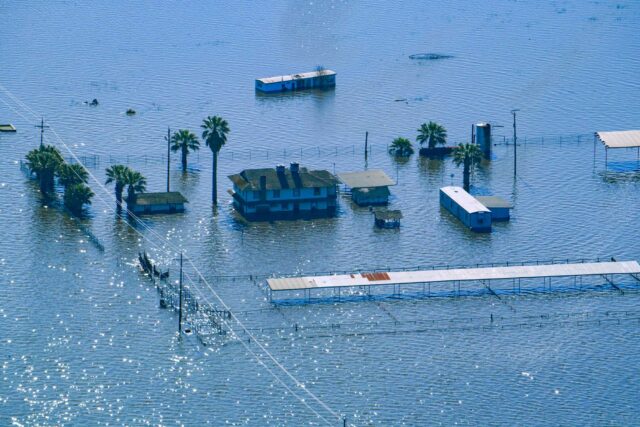The US Army Corps of Engineers (USACE; Corps) is the federal agency responsible for planning and building much of the nation’s flood management infrastructure. Historically, USACE and Congress (which authorizes and appropriates funding for flood risk management projects) have been criticized for using an economic evaluation system that favors projects in wealthier areas, where property values are higher. This appears to be changing. We asked Dr. Tessa Beach, chief of planning and environmental services for the San Francisco District, to tell us more about the resources available for historically underserved communities.
There have been important changes in the Corps’ policies regarding flood protection planning, particularly for low-income communities. Can you summarize these?
Overall, the fundamental Corps policies haven’t changed. Rather, we’re seeing a reframing of which criteria the federal government prioritizes when investing finite resources. For example, the executive branch’s Justice40 initiative outlines the priority to deliver benefits to historically underserved communities. The Corps has established policy directions to reflect that.
In March 2022, the Corps released interim guidance for delivering on environmental justice throughout Corps programs. This includes removing barriers to participation and increasing benefits to historically underserved communities across a broad suite of Corps programs, including through pilot efforts to remove cost-sharing requirements; providing communities with important technical information to aid in flood risk management; and comprehensively evaluating projects with equal consideration of economic, environmental, and social benefits.
The Water Resources Development Acts of 2020 and 2022 authorized the Corps to conduct 20 pilot projects nationally that will be 100% federally funded for low-income communities. Communities can apply to participate, and the projects include flood risk management. Funding these at 100% federal cost is pretty significant: usually, a non-federal project partner would be responsible for contributing 50% of the study cost and 35% of the construction cost.
We’ve also heard from communities that a lack of technical information poses a high barrier to applying for grant funding. The Corps is not a granting agency, but we can help communities develop technical inputs for flood risk and water resource management. Under the 2022 Water Resources Development Act, entities that meet the definition of economically disadvantaged can apply for technical assistance at 100% of federal cost under the Corps Planning Assistance to States program. Communities can use the information and plans developed to seek other sources of funding. In the past, these technical assistance partnerships have led to further collaboration with the Corps.
Will flood protection investments shift away from more affluent communities to low-income communities?
The Corps never aimed to direct funding to particular areas or communities—it always funds the highest-priority projects. We’re seeing a difference in how the government defines the priority. In the past, priority was placed on the benefit-cost ratio, or on projects that address the highest level of risk or address multiple purposes simultaneously. Now, through Justice40, there’s an emphasis on delivering benefits more broadly to underserved communities. This is a pivot away from focusing on a project’s economic benefits alone to putting a more equal focus on economic, environmental, and social benefits. My personal opinion is that the comprehensive, equal consideration of total benefits is creating a more level playing field, because we’re able to consider all benefits from an action and make recommendations based on those, rather than just the economic benefit-cost ratio.
Any final thoughts on what we learned from this very wet year in California? Any surprises?
We had 10 or 12 atmospheric rivers in a row after a long drought, and that was a wakeup call. We don’t experience the hurricane disasters our counterparts on the opposite coast do, but those atmospheric rivers produced a lot of damage and disruption, particularly to frontline communities. We’re working to speed up efforts to plan and construct appropriate infrastructure to manage risk. But we still have to work through many requirements with big infrastructure projects. In the meantime, our technical assistance programs can be key—for example, by preparing emergency action plans and operation procedures for frontline communities to use when these events occur.
There’s also a need to nurture partnerships. We want to build relationships and trust with communities outside of study and project efforts. This a big step for the Corps. Usually, when funding ends, we turn our focus to a new project. Promoting broader, continuous community outreach and engagement is important—and another ongoing focus of our agency’s environmental justice efforts.





